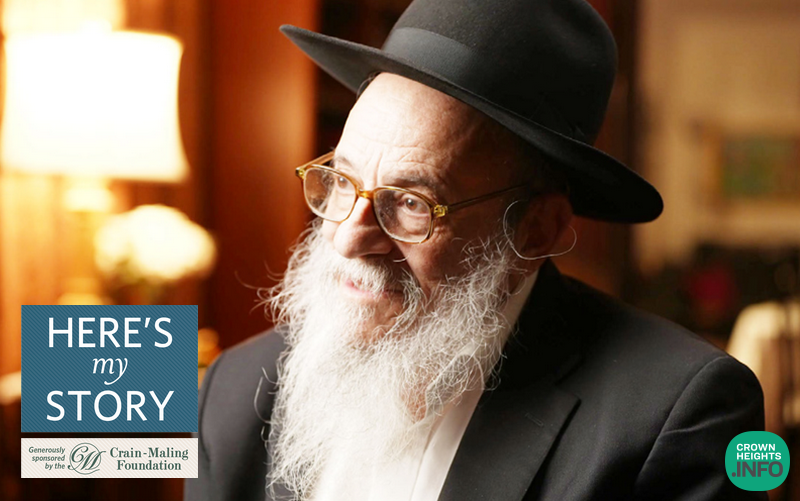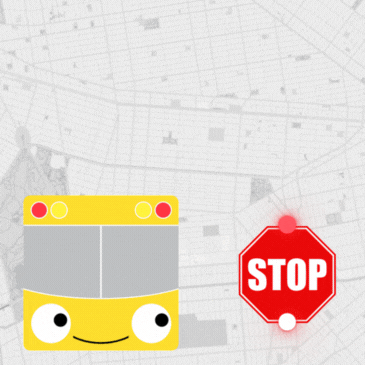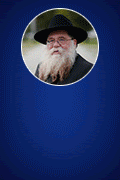
Here’s My Story: No Tricks, No Shortcuts
Rabbi Bentzion Stein
Click here for a PDF version of this edition of Here’s My Story, or visit the My Encounter Blog.
Even before I was Bar Mitzvah, I had a few audiences with the Rebbe. My father used to travel to the Rebbe from Montreal every year, and from when I was a little boy in the late ‘50s, my brother and I would take turns going with him.
Before going into the Rebbe’s room, my father would always write a note about whatever he wanted to say or ask. When we entered, he would give his note to the Rebbe, who then read the whole thing, while making notes with a pencil. He then answered my father’s questions, while I listened, although most of the time, I didn’t understand what exactly my father had asked.
One time, as we walked into the audience, even before my father had a chance to hand his note to the Rebbe, the Rebbe asked: “How is the sugar doing?”
My father had diabetes, and he used to take insulin shots every day to regulate his blood sugar. Today, the needles used for those shots are quite different than they were in the 1950s, and some diabetics don’t need to inject anything at all. But back then, the needles were thicker, and taking those shots could be very painful. Knowing how my father suffered from the shots, the Rebbe then added that he should ask his doctor about some of the new medications that were coming out.
In the end, my father wasn’t able to take any of those new medications, but the look that I saw on the Rebbe’s face, and the way he cared for his chasid made an impression on me.
After he finished answering my father’s questions, the Rebbe would turn to me. “And what are you learning?”
One year I had been studying Tractate Pesachim in the Talmud, which discusses the laws of Passover. Specifically, we had just learned the Mishnah that says one may eat chametz, leavened bread, “until four hours” on the day before Passover.
When I quoted this Mishna, the Rebbe asked, “What does four hours mean? Four o’clock?”
“No,” I replied. “It means four hours from the beginning of the day.”
“And when does morning begin?” the Rebbe pressed. “Sunrise or dawn?”
I wasn’t sure, but for some reason I thought that those hours were calculated from sunrise, so that is what I answered.
“How do you know that it’s from sunrise?”
“Probably because that’s what my teacher said.”
The Rebbe smiled, and later I learned that there is actually a disagreement among the Halachic authorities when exactly the day starts in this respect. The Alter Rebbe, the founder of Chabad, ruled that it is sunrise.
In general, when kids went to the Rebbe along with their fathers, the Rebbe would ask these sorts of questions. But from my Bar Mitzvah and on, I began asking the Rebbe questions that I had. The custom in those days was that yeshivah students were able to meet with the Rebbe on the occasion of their birthdays, and I had the great merit of going every year from my Bar Mitzvah until I got married in 1972, and then a couple more times after that.
During these audiences — which would last a couple of minutes — the Rebbe would answer my questions. I would ask about issues of concern for a yeshivah student, such as how to observe a particular Chabad custom, about what area of Torah I should study, about how I prayed, about my inner struggles, or about dealing with the yetzer hara — the Evil Inclination.
One year, in response to a question about those struggles, the Rebbe recommended taking a few chasidic discourses that focus on developing one’s character — as opposed to the more abstract, intellectual subjects that Chabad Chasidut often focuses on — and reviewing them several times.
A chasidic mentor then suggested two particular discourses — one from the Rebbe and another from the Previous Rebbe — and I learned them enthusiastically. But, with time, their effect began to wear off.
So when I went back for my audience the next year, I wrote in my note that it wasn’t working anymore, and I asked what else I should do to help me with my spiritual struggles.
“Take a photograph of my father-in-law,” said the Rebbe in reply, referring to the Previous Rebbe. “When things are difficult and you feel you are being tested, look at the photograph, and that will remind you that the Rebbe is always looking at you, and that the Rebbe is there. When you reflect on that, it will help you.”
On another occasion, I asked about the attribute of ahavat yisrael, of having love for a fellow Jew. When I asked the Rebbe how I could develop this feeling within myself, he referred me to Derech Mitzvotecha, a work from the third Rebbe of Chabad that analyzes the mitzvot in the light of chasidic thought. The Rebbe told me to study the chapter about this commandment, and then to think it over from time to time.
Years later, after I got married and became a full-time teacher at the Lubavitch Cheder of Detroit, I asked the Rebbe about how to help my students develop good character, and got slightly different advice.
I was teaching little kids, from five to ten years old, and felt that the main thing I should be doing was providing a good chasidic education. That is, teaching good personal traits like ahavat yisrael and yirat shamayim — a pious fear of Heaven — was considered even more important than teaching the Talmud or other Torah texts.
So, in a letter, I asked the Rebbe about it: “How can I implant yirat shamayim in my students?”
I didn’t get an answer right away, and after a few months had passed, I stopped expecting one. But the Rebbe still kept the question in mind. In response to another letter I had written to notify him of the recent birth of one of my children, I received a letter with the Rebbe’s standard blessings that he would send on such occasions, and at the bottom there was additional note:
“In answer to your question about implanting yirat shamayim in one’s students: lehar’ot dugma chaya — by showing a living example.”
In other words, if I wanted to have an influence on my students, it wouldn’t be by lecturing them but by being a living example of how they should act. I didn’t need to search for any tricks or shortcuts.
Rabbi Bentzion Stein serves as the executive director of Detroit’s Lubavitch Cheder, where he first began teaching in 1974. He was interviewed in March 2025.














